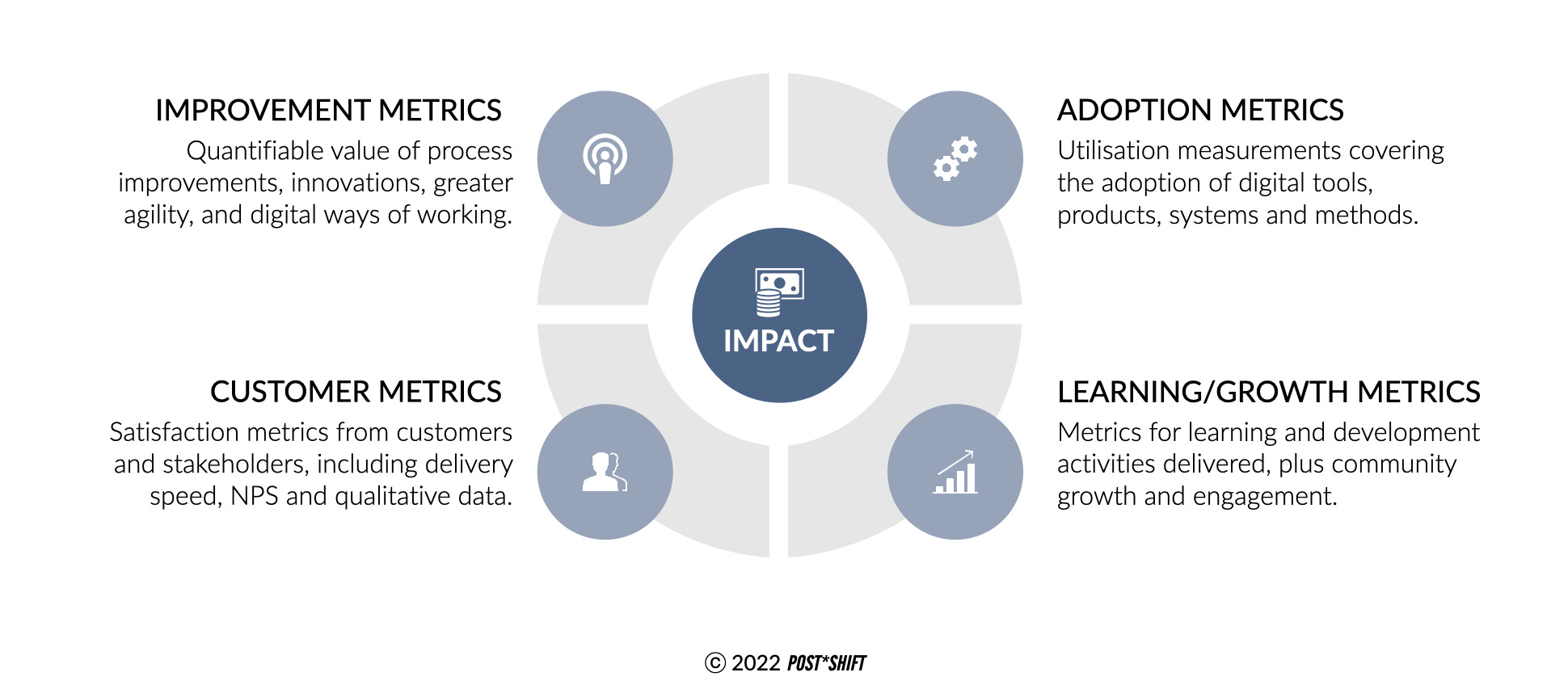In this issue, Livio digs into some of the ways that digital leaders can quantify the value of their transformation efforts and translate them into measurable financial benefits.
8 out of 10 IT execs prefer…
Demonstrating the business value of IT is an established field of consulting inquiry, with analyst firms like Gartner and Forrester leading the way for decades. The premise is straightforward: given the large monetary investment routinely made in new IT platforms, systems and services, how can senior executives – often with limited subject matter knowledge – be reassured that this spend will bring demonstrable returns? Gartner’s 7 Rules for Demonstrating the Business Value of IT is the latest offering in this mould, focusing on storytelling on this occasion, but essentially sticking to the main purpose of justifying IT spend.
The uneven path of digital transformation efforts is littered with this type of analysis. While some of it is clearly helpful in building IT business cases, there is often a large and observable gap between the shiny future-gazing designed to capture the C-suite’s imagination, and the humdrum – but vital – reality of low digital skills, limited technology adoption, and cultural resistance.
In essence, buying technology is still seen as a shortcut to progress, and a whole industry has grown around the promoting and measuring of its business value, employing various methodologies (some of which are, frankly, dubious).
But what about the people?
By contrast, the consulting industry’s efforts to create a reliable quantified model to measure the economic impact of people change is far more limited (with some notable exceptions), which is surprising given that the ability to develop the workforce, top to bottom, is still the main determinant of success for digital transformation programs.
So, how can we start to develop meaningful measurements for the people side of digital change? As far back as 2014, Lee posited the development of a Quantified Org, which could be measured with:
a framework of organisational health measures, informed by theory and company goals, that can guide ongoing change in an agile, iterative way and assess the success or failure of change actions against the desired future operating state.
This approach has informed a lot of our thinking on success measures since, and remains one of the best ways to develop meaningful metrics for a sizeable transformation effort.
However, in the current economic climate, companies are singularly focussed on demonstrating the more traditional economic value of workforce development activities they have already invested in, such as corporate education, digital skills programs, or technology usage and adoption metrics.
To these, increasingly, we also add impact metrics for those communities (such as digital guides or citizen developers) that we can enable to undertake fast, local, practical and tactical transformation activities, the impact of which delivers significant efficiencies or even top-line improvements.
From soft skills to hard cash
To facilitate socialisation among senior executives, we lay these out in an adapted balanced scorecard format, with data drawn from multiple systems feeding the card’s 4 key sections:
- Improvement Metrics – the quantifiable value of process improvements, innovations, greater agility, and digital ways of working
- Adoption Metrics – utilisation measurements covering the adoption of digital tools, products, systems and methods
- Learning/Growth Metrics – metrics for learning and development activities delivered, plus community growth and engagement
- Customer Metrics – Satisfaction metrics from customers and stakeholders, including delivery speed, NPS (where appropriate) and qualitative data.
These are then summarised to show the collective economic Impact made by these activities over a set time period – usually 12 months:

This also provides benchmarks for ongoing activities, as well as targets for future change and adoption work which needs to take place. There are three key challenges in this type of work:
- Obtaining good quality data to feed the model, given the multiplicity of business systems you could use (typically, digital workplace, HR platforms, accounting data, etc);
- Visibility of investment costs to provide a baseline for any ROI calculations;
- Agreeing the most meaningful and effective metrics to apply with your stakeholders (we make this easier by having a library to choose from).
Perhaps the trickiest part is how to translate activities into the kind of hard cash benefits that senior stakeholders care about. We have developed several calculations to do this, leading to demonstrable savings that range in the millions of €/£/$. That said, we also try to educate companies that some of the benefits are simply not quantifiable in traditional efficiency or top-line terms, for good reason.
To be clear, none of this work is about deploying ‘bossware’ or supporting any kind of employee monitoring, which is a distasteful and ultimately unsustainable practice. Rather, this is about providing CIOs, CDOs, Change and L&D leaders with the kind of quantified economic value data they are increasingly being asked to include in their business case for the next budget cycle.
If you would like to discuss how to measure the economic impact of your digital transformation, change management or technology adoption activities, please get in touch.

